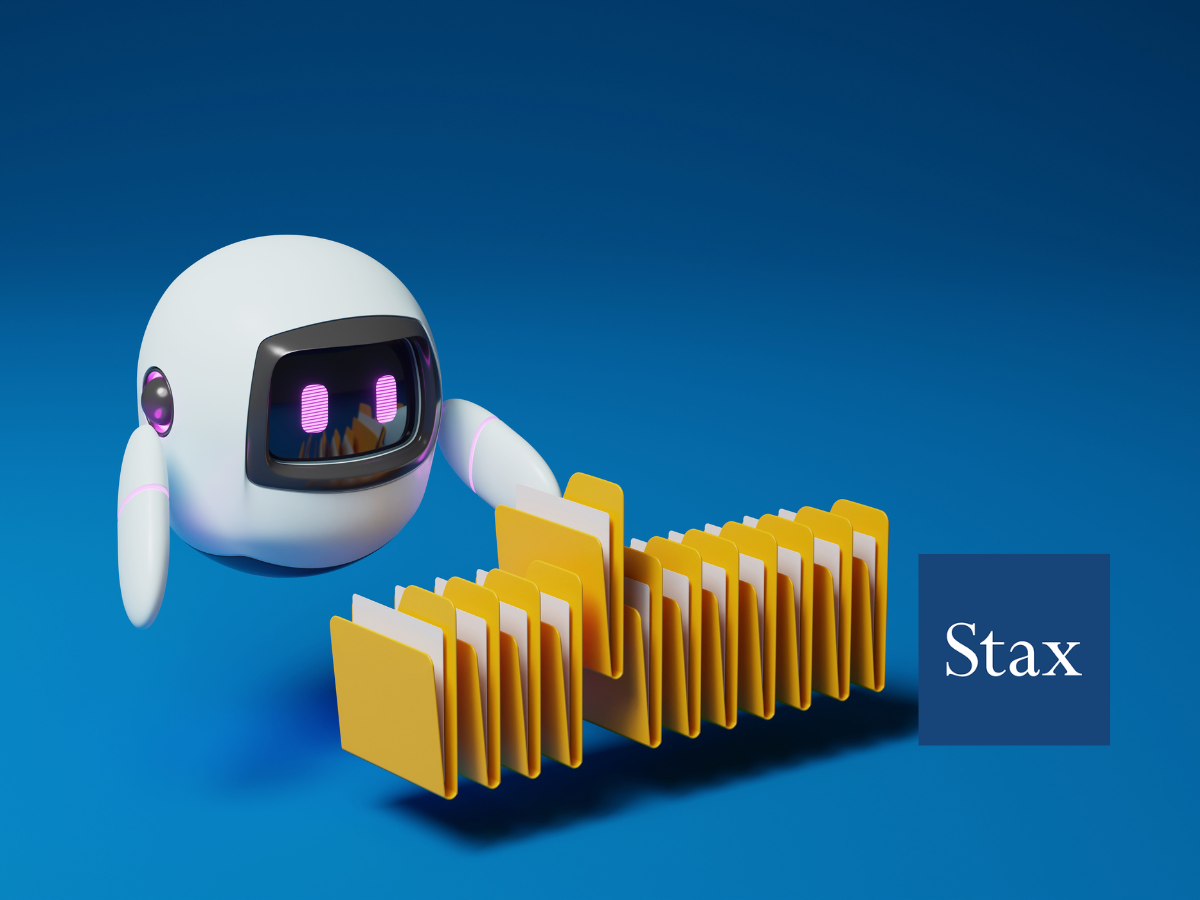AG Tech, Data, and Changes in the Value Chain: From Farm-to-Fork
AG Tech, Data, and Changes in the Value Chain: From Farm-to-Fork
Technology is fundamentally changing behavior and power dynamics across the agriculture value chain. Investors in agriculture should look both at how technology is being used to drive value within their own segment of the value chain and at how available technology is driving change across the industry. Similarly, investors might look at how technology changes in other sectors can come into play in the agricultural sector, because there are parallels.
Market Level Trends
At the market level, technology, and the open access it provides to better information, can be disruptive and drive more opportunities, especially for companies at the upstream and downstream ends of the value chain. With the large swings in commodities over the last few years, and greater access to customers and suppliers across the value chain, thanks to a freer flow of information, growers and producers are communicating and trading directly with large-scale customers and are depending less on middlemen for access to markets.
With this dynamic, we are seeing shifting power dynamics and profits between stages of the value chain. Thinking this through will allow investors to better determine where they want to play in the sector, how to create value in their niche, and how to plan for integration, whether vertically or horizontally.
As briefly alluded to already, power is shifting away from the middlemen’s historical offerings for each, and due to the combination, of the following reasons: Newer sources of information Enhanced transparency of information. Better storage options. Improved communication with end buyers. Easier transportation. Faster information flows.
Information is increasingly available to the farmer and the larger end customers, pulling power away from the traditional offerings of trading and commodity firms in the middle. Many layers of brokers and trading operators have long profited from the lack of information, connection and communication between producers and commercial/ retail buyers. Large trading firms historically had information advantages with regard to the demand and availability of downstream players. Upstream players, however, did not have transparency into downstream market dynamics, nor direct access or distribution capability to downstream participants.
These trading firms also traditionally had scale, storage and pricing power — those with larger balance sheets and infrastructure would receive benefits from buying and storing at the trough of the market and selling at the peak. With the expansion of global storage assets and improvements of roads and transportation, there is simply more supply of independent storage, and more producers can and should store their own produce and sell when the market is right. Producers developing direct contracts and off-takes with larger consumers have more reason to invest in their own storage.
A Stax analysis took a 30-year look back at grain pricing from peak to trough, and the results showed that storage could easily be financed to hold product to sell at higher priced times and still yield a solid mid-teens return, given access to information and capital — both of which have significantly improved for upstream producers in the past decade (2006 to 2016). With more information about the value of an asset comes much easier financing of the asset and access to capital. More distributed access to capital puts more power into new hands. Of course, this presumes that price troughs do not remain for sustained periods of time, in excess of what producers can afford to finance. So although historically there are clear strong returns, producers need to have sufficient access to capital to weather the cycles.
A favorite headline of recent years came from a financial paper: ‘Grain traders’ profits hit as US farmers hoard corn.’ Why call it hoarding if the farmer keeps their produce until prices come back to peak? The farmers did not buy the crops; they were just waiting to sell inventory until pricing became more attractive. The trading firms just are not used to this; rather, they have been used to regular availability of inventory given their power position based on knowledge and infrastructure.
For the trading firms, this is by no means the end. The opportunities will continue to provide value to multiple participants, and in a market this fragmented, those opportunities certainly abound. Expanding reach, ability to process more elements within the value chain (physically or digitally), traceability and compliance will all continue to be within the trading firms’ sphere of influence. Trading firms are also likely to continue to migrate closer to the resource to assure access and to engage in more stages of value enhancement. The good news is that trading firms have historical relationships, at local, regional, national, and international levels, as well as data, access to assets and capital. This is a tremendous asset base and position from which to develop and test new offerings to the marketplace.
With the growth in scale and sophistication of large retail customers comes the ability for retailers to form direct relationships with producers, and the opportunity to inform them of consumer needs and premium value.
Direct communication with farmers was once reserved for companies the size of McDonalds or sectors such as the poultry industry with relatively few large players; these companies would communicate interests to growers who develop product to suit their specific needs. The technology within those value chains would follow what the mega-customers wanted. It also gives large-scale customers the ability to choose and evaluate their suppliers, essentially de-commoditizing them, and the ability to put value on the source of supply rather than just availability. The continued scaling of grocers, food distribution companies and restaurant chains generates more customers of size who can communicate directly to the grower.
Grocers and retailers are using technology to increase the speed at which they generate insights on consumer interests; and big data allows them to develop faster market tests of new offerings. They learn what works more quickly and can communicate that back to the producers. The catch is that there are times when a grocer recognizes opportunity so fast that growers are unable to respond to the demand at the same speed. When Whole Foods was looking to expand because they recognized that consumers were hungry for more organic food and willing to pay a significant price premium, the constraint was in sourcing organically grown produce rather than in finding locations to open new stores. Whole Foods had a good run, helping create greater supply of local organic foodstuffs, working with growers and moving quickly to reach that supply.
Information passes from consumer to consumer more quickly than in the past when consumers relied on labels, food pyramids and government recommendations, or simply trusted that food was good. With the rise of bloggers and crowd-sourced ratings, consumers can source information about what they are eating faster than ever. With consumer reviews of products, there is now a world of focus group content available for the taking.
With such data available, it is possible to key into consumer interests much faster. An example of this is more higher-earning and information-seeking customers who want healthier snacks and see protein as an indicator of health. With that knowledge, one can develop both the emotional branding of a product and the key indicators a consumer looks for in assessing the premium value of a product.
For example, in a big data analysis developed by Stax on consumer reviews of white wines with high scores, we could reverse engineer that experts attributed greater point value to a ‘nutty flavor’ in their Chardonnay than a pear flavor (.665 points better for nutty over pear, with apricot flavor roughly halfway between). Similarly, an analysis of sparkling wines from across the globe demonstrated a clear price premium placed on country branding.
However, the premium multiple was different at each level of score for the wine: for example, the price premium at 81–85 point ratings was 4x and at 91–95 point ratings it was only 2x. What this means is that an independent ranking of a product by a third party can compete with decades of country branding in setting a price point in the market place. This type of data is powerful for the producer and retailer, allowing them to better choose what they develop, market and sell.
Having this information anywhere in the value chain is helpful, and the sooner the better. It also means that if farmers and Consumer Packaged Goods providers are not getting fast information feeds from their retail distribution, they have a good chance of being left out. Everyone who wants to be successful in the value chain has to tighten up their reaction times, get information faster, and put it to work for themselves. We have clearly seen declines in many non-organic home-cleaning and childcare-related products sold through grocers — trends that should have been caught earlier based on consumer searches online.
A caveat to this information access is the speed at which producers can make change, their willingness to test new offerings and their willingness to bear the risk. Regardless of the speed at which a grocer identifies a change in consumer interest, it takes a significant amount of time to change a non-organic farm to an organic farm, or to get any farmer to make significant structural or production changes. Generally, it is not possible to accelerate growing seasons and difficult to get farmers to take risks on new efforts.
This is a global constant — it is tough to get enough testing grounds for crop changes and there are places where technology and seed/growing technology are not being tested because of risk tolerance; and because of long growing cycles, product adaption and serial testing can take years, not weeks or months. Companies are going to need and want to provide a way for farmers to pilot new methods. Farmers that can react to trends the quickest will reap outsized profits and stand to gain leading market positions.
For these reasons, there is a lot of value in the players that can accelerate their product development, whether organically through their R&D or through the acquisition pipeline. Smaller companies, which think they have hit on a consumer interest or need, but do not have the distribution, will have to think of not only what the customer wants, but who can help them scale the operation to meet large demand. This could create a dynamic similar to that in big pharma — as a distribution hub buying up smaller companies. Scale and growth also are being financed by minority and control investments from financial sponsors and other professional investors.
Operational Level Trends
The Ag-tech of the past produced efficiencies largely through seed technology, fertilizer/crop protection and mechanization. The Ag-tech of the future will continue to look to similar sources of development, but is also increasingly likely to look to improve operational efficiencies through ‘smart’ or ‘precision farming’.
Using smart technology at an operational level can result in the ability to make better real-time decisions on how best to plant, and the ability to use equipment, seeds, water and nutrients optimally at all points in the growing cycle both to maximize yields and to optimize input costs.
While larger scale farms in mature economies have already adopted some of these technologies to monitor soil quality and nutrient levels, or to keep constant tabs on the health of livestock, adoption has been somewhat slow and diffuse. This has been due primarily to farmers’ uncertainty as to the clear return on investment, especially given the costs and complexity of such technology. Although farmers are often willing to adjust methodologies where they see improved yields/returns, they typically need to be convinced of the value proposition before they embrace change.
The reduction in size and cost of sensors will increase the adoption of these technologies in the future, while the development of the Internet of Things (IoT) and increased machine-to-machine (M2M) communication are expected to make data collection and interpretation faster and more accessible. This data, more user-friendly technology, and the feedback loop are what will continue to accelerate and drive efficiencies in the ecosystem. Critical to these processes is a mechanism to tie this all together for farmers, and best practices on ownership of the information/management system.
The equipment manufacturers have been steadily improving capital equipment to:
Sample soil, adjust planting and nutrient mix based on data brought in from a variety of sensors (including drones). Precision guide themselves with GPS.
The small tweaks in performance of a large farm can have substantive value in improving profits; much like a small change in a company’s top line can have dramatic improvements in the bottom line. The manufacturers are also pushing more into the whole farm management solution, although it is taking time to create both the information system and the ease of use that we are used to on smart phones.
Manufacturers are expected to deliver value via capital equipment, whether with their own technology or an open-source system that allows for multiple technologies to plug into capital equipment. What cannot be determined at the current time is who will own the dashboard and who will provide the data feeds for the whole operation. It is unlikely that we will see a closed loop system gain wide-scale adoption; a flexible system that allows for various data feeds and exports would be more useful.
Another continuing trend where technology will play a key role, is the reduction of waste and the improvement of sustainability for both return and environmental reasons.
Smart farming is helping to reduce waste at the production stage while other technology-driven efficiencies are also reducing spoilage and squandering in processing, packaging and distribution. At the production phase, it includes replenishing nutrients through better understanding of needs, application and rotation. This extends the life of the land and the premium paid by consumers for lower chemical produce. Technology controlling pests while reducing chemical usage is a constant opportunity. At the seed level, there is continued development of crops that are better tailored for mechanized harvesting and usage, as well as crops that have characteristics that will enable them to sustain natural challenges better and longer.
As an example, the Volcani Institute, which has long history of developing heartier breeds of crops, has recently developed bananas with a significantly longer shelf life. This should reduce waste and needs for cold storage. At the packaging and distribution level, there have long been companies in the fruit processing and distribution arena deploying significant efforts with a ‘zero waste’ goal. Alternative marketing and composting are still at early stages in the reduction of waste at retail and consumer levels.
Scaling Technology: 5 Key Steps
With software adoption in mature industries, there are five steps to scale technology:
- Get it to work.
- Make it easy enough for a lot of people to use as a standalone (limited plug-ins).
- Figure out how to distribute it.
- Make it easy to plug into everything.
- Sell it everywhere, easily.
In the Ag world, we are still somewhere between points 1 and 2. Until we get to 3 and 4, we will not see heavy creation of specific reading and improvement technology. An iPhone is needed in order to start creating apps and the Xbox to start creating games. The right platform will lead to proliferation of improvement technologies as well the expansion of the population of designers of these technologies. And what will similarly expand the use of all these technologies will be the ability of more farmers to evaluate their total cost of ownership and to see the value of investing in capital expenditures to reduce total costs of operations, including reducing future capital expenditures.
Before completing an analysis of the impact of technology on the agriculture value chain, it is important to briefly review some of the constraints and unknowns to scaling technology.
Scaling Technology: Global and Regional Constraints and Unknowns
There are three issues of great importance that will play significant roles in the evolution of the agriculture value chain, around which there are many large parties vying to play a lead role. However, there are also a great number of parties with limited incentive to change the way things are done today.
- While water technology provides an obvious use of technology for agriculture, its use is widely varied. The extent of water scarcity and true value pricing of water differs across regions. Good and consistent water policy is similarly scarce, even in water-starved regions. Those with better water technology — both selling and utilizing such technology — should see significant advantage now at every step of improvement in water policy. For example, Israel recycles 80 percent of its water, with technology readily exported all over the world. While California is collaborating with Israel on water tech, the reality is that California has more than 400 urban water districts, each with their own policies and pricing, so incentives for adoption of water tech, even in a water-starved state, are fragmented. Ultimately, smart water policy will be critical to the expansion of food production.
- Food security (that is, the availability of food locally), source of food and its quality, and the method of growth (chemicals or not) are all continued areas of focus and development. There will be continued value and premium paid to provide traceability and to assure various traits, including organic production, chemical retention and food safety. This will drive the use of more technology to reduce the use of non-natural products and expansion of land that is clean of chemical treatment. In terms of food security, based on having more local supply of foods, what remains to be seen is whether government support of these efforts will continue in times of economic uncertainty. Increasingly, governments quantify the access to domestic and regional production of food and are creating more programs to encourage growing locally, even when it is not the most cost-effective method for local economies. Similarly, the interest in vertical/indoor farming and small-scale farming is growing — though still small — in many places with government help; the biggest barriers are initial capital costs with unknown returns. Countries will want to invest in local production to develop bankable technologies and continued access to supply, and support these programs through the next economic trough. The focus of technology in agriculture will vary between developed and emerging markets with the former focused more on quality trends noted earlier, and the latter on volume and quality where appropriate from a cost perspective.
- An example of global interests is China’s increasing strategic acquisitions of agriculture companies on a national level — China was involved in over 50 overseas M&A deals in the agribusiness and food sector within the space of five years (2010–2014). The country will need to feed a lot of people, and needs more access to product and technology. Therefore, it makes sense to see a lot of acquisition interest across agriculture in China, particularly in areas where there may be scarcity. The reverse is true in countries concerned about a constrained agriculture product in their country being sold to a foreign interested investor. Several large China-connected deals have faced significant headwinds from governments in a way that historically would have been reserved for other strategic assets.
Who is going to own the dashboard and who is going to own the data streams? Will we get the equivalent of equipment providers with smart sensors and precision farming that can take instruction sets from anywhere? Will it be another standalone provider? Will all of the data/information/algorithm companies get bought up globally for large values by the seed/fertilizer companies in a big pharma model and price data streams one at a time? Or will it be more like a Thomson Reuters information services company buying up information and analytics providers, which have data for various strains of produce and regions? While it is too early to answer these questions with any kind of certainty, first indications show that these data aggregators will have to gain the trust of farmers (who have concerns about privacy and rightful ownership of data) in order to scale up and build a meaningful database. In addition, the data aggregators will have to convince farmers of the value add through the services they aim to provide.
Conclusion
Technology and access to information are changing the market-level power dynamics across the value chain, creating a barbell of increased power in the producers and large-scale retailers. This has been driven by broader access to information and increased availability of capital on the part of the producers, and exercise of buying power by the largest retailers.
Technology is facilitating changes at the operational level too, and although technology has long driven yield and efficiency improvements, in the long term the major focus will be on broad-scale operating platforms, which will significantly enhance the day-to-day operating efficiency of farms and speed reaction time to change and improvements. The value drivers in ag-tech will be around efficiency, total yield improvement (including waste reduction) and improved intensity of production.
The challenge is to identify who will lead these initiatives. It is not just about finding the best technology, but the most adoptable and the most adaptable. Will the lead be taken by the Ag giants, or will it be independents? Will there be an Apple or a Google in the Ag industry in ten years’ time driving technological change and disruption, or a company that we have not even heard of today? There is plenty of opportunity for technology to play a critical role in helping the agricultural sector to keep producing results, season after season.
Read More
All Rights Reserved | Stax LLC | Powered by Flypaper | Privacy Policy






